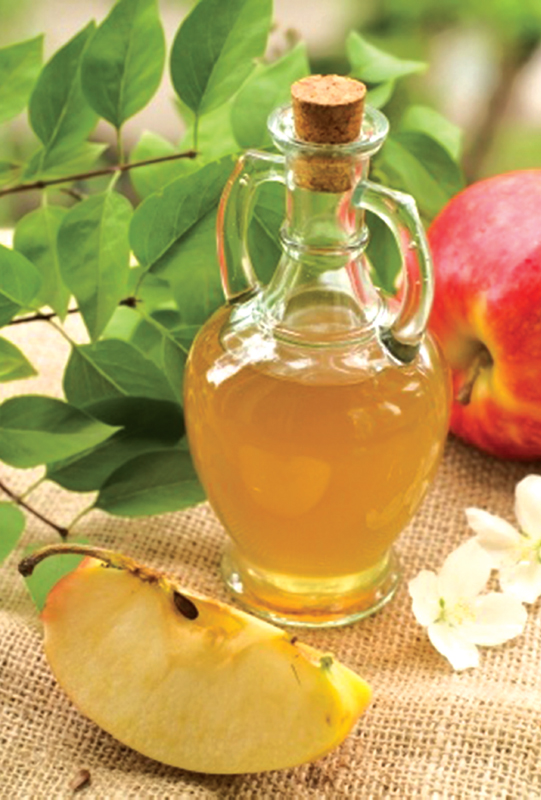
Copyright 2015 by Simone McGrath All Rights Reserved. No part of this book may be reproduced in any manner without the express written consent of the publisher, except in the case of brief excerpts in critical reviews or articles. All inquiries should be addressed to Skyhorse Publishing, 307 West 36th Street, 11th Floor, New York, NY 10018. Skyhorse Publishing books may be purchased in bulk at special discounts for sales promotion, corporate gifts, fund-raising, or educational purposes. Special editions can also be created to specifications. For details, contact the Special Sales Department, Skyhorse Publishing, 307 West 36th Street, 11th Floor, New York, NY 10018 or .
Skyhorse and Skyhorse Publishing are registered trademarks of Skyhorse Publishing, Inc., a Delaware corporation. www.skyhorsepublishing.com 10 9 8 7 6 5 4 3 2 1 Library of Congress Cataloging-in-Publication Data is available on file. Print ISBN: 978-1-63220-693-0 Ebook ISBN: 978-1-63220-954-2 Printed in the United States of America contents  Introduction Look out honey, theres a new kid in town! Thats right folks, honey is not the only amber liquid that can boost health, healing, and vitality. There is another amber liquid that is worth its proverbial weight in gold. This lesser-known phenomenon has recently taken the world by storm and is fast becoming a household name. Its remarkable benefits are responsible for health gurus, nutritionists, and doctors alike singing its praises, and it is being heralded as natures finest healer.
Introduction Look out honey, theres a new kid in town! Thats right folks, honey is not the only amber liquid that can boost health, healing, and vitality. There is another amber liquid that is worth its proverbial weight in gold. This lesser-known phenomenon has recently taken the world by storm and is fast becoming a household name. Its remarkable benefits are responsible for health gurus, nutritionists, and doctors alike singing its praises, and it is being heralded as natures finest healer.
Ladies and gentlemen, allow me to introduce apple cider vinegar! Health, weight loss, fat burning, beauty, and restoration are just some of the qualities contained in apple cider vinegars impressive and ever-expanding rsum. It can be used to revitalize your home, and not even the loyal family dog is exempt from enjoying the benefits of this wonderful liquid, as it is a natural flea repellant! Legend has it that in an effort to win a wager with Mark Antony that she could spend a fortune on a single meal, Cleopatra dissolved a pearl in a glass of vinegar and drank the costly cocktail. Whether this tale is true or not we will never know, but the fact is that the exceptional power of apple cider vinegar is nothing new. Its virtues have been extolled through the ages from as early as 5,000 BC when the Babylonians used it as a condiment and preservative, and long before Cleopatra drank her expensive concoction, Hippocrates was using the tart liquid for its incredible medicinal qualities. In fact, it may well be one of humankinds earliest recorded remedies. Over the centuries, vinegar itself has been fermented from an impressive number of different products, including fruits and berries, coconuts, beer, potatoes, and honey, to name a few.
Vinegar is actually an incredibly versatile product that can be derived from many sources. As has already been stated, any fruit can ferment into vinegar, but vinegar can also be made from many different types of grains, the most common being rice. Rice wine vinegar is incredibly popular in Asian cuisine and is enjoyed the world over. In fact, vinegar is so versatile that it can even be made from wood chips. Yes, you read right. However, when creating vinegar from grains or wood chips, the starches contained in these products first need to be converted to sugars.
Once this has taken place, the fermentation process can start. But no matter what product is chosen as the base for vinegar, by far the most endearing of all is the vinegar made from apple cider. It will take something truly spectacular to oust apple cider vinegar as the darling of all natural remedies. So read on and find out exactly why this amazing amber liquid has got everyone talking! Lets get the nitty-gritty science facts out of the way first. Along with yogurt, cheese, beer, and wine, vinegar is one of the most popular foods created from yeasts and bacteria. Most vinegar is created from fruit juice when it is exposed to yeast and bacteria, which react to the sugars in the juice in different ways.
The yeast ferments the sugars, causing a chemical reaction that changes it to alcohol, then the alcohol is further broken down into acetic acid by specific bacteria. Acetic acid is the base component of vinegar. The yeasts and bacteria that break down fruit sugars into vinegar are commonly found in nature, which explains why, when the juices are extracted from fruits, they naturally progress through the stages of fermentation and acetification. Now while this process sounds less than appealing, I think we can all agree that the end products are simply divine. The family of bacteria that are responsible for converting alcohol into vinegar are called acetobacters. What is interesting is that this particular family of bacteria has been at the center of heated debates amongst scientists who disagree on how many types of this bacteria actually exist.
This means that isolating a pure strain of this mysterious bacteria for vinegar-making can be considered as much a science as an art. When alcohol changes into vinegar, the chemical reaction results in a substance called cellulose. This fibrous substance can easily be seen in homemade vinegar or in a bottle of wine that has turned to vinegar. This thick filmy substance floats in the vinegar, often near the top, and is called the mother of vinegar. The mother is often erroneously believed to be responsible for creating vinegar, but it is actually the end result of the whole process rather than the initiator. However, as the mother of vinegar is likely to have a large concentration of acetobacters clinging to it, it can successfully be used to introduce these organisms into cider, for example.
Acetobacters also occur abundantly in our natural environment, but need oxygen in order to grow and survive. When alcoholic beverages like apple cider are exposed to the air for a period of time, the interaction between the acetobacters and the oxygen facilitates the process of converting the alcohol into vinegar, and the result is apple cider vinegar. As the cider is transformed into vinegar, the alcohol content of the liquid drops and the acidity levels rise. The best and easiest way to determine when the acetification process is complete is to taste the liquid. There should not be any odor or flavor of alcohol present. The strength of the final vinegar product is dependent on the amount of alcohol in the original cider.
Most of the vinegar that is used in the average household measures around 4 to 6 percent acidity, and the alcohol content of the apple cider should be around that percentage too. The natural tendency of fruit juice to ferment is perhaps the reason why alcoholic beverages and all kinds of vinegar have featured so prominently in the diets of almost every culture in the world, and still remain staples in many regions today. The word vinegar is derived from the French term vinaigre, which literally means sour wine ( vin meaning wine and aigre meaning sour). Apple cider vinegar is without a doubt one of the healthiest things you can take for maintaining good health. It can be incorporated into almost any aspect of your daily routine, from your meals, to smoothies, to simply taking a spoonful or two every morning. It doesnt matter what your preferred method of consumption is, just so long as you take it.

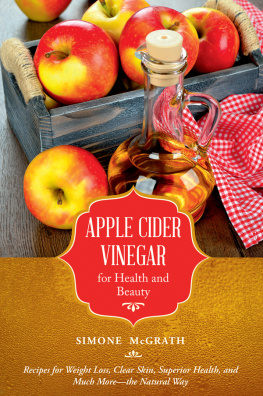











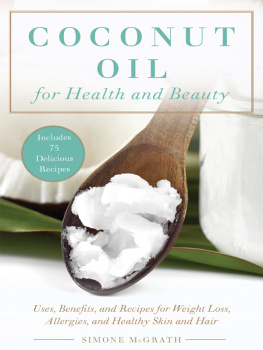
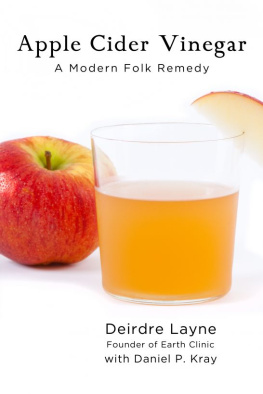

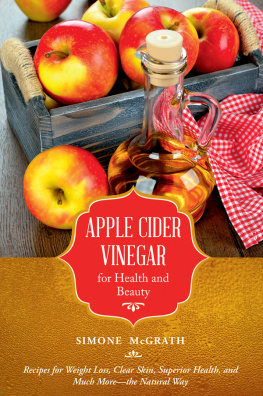


 Copyright 2015 by Simone McGrath All Rights Reserved. No part of this book may be reproduced in any manner without the express written consent of the publisher, except in the case of brief excerpts in critical reviews or articles. All inquiries should be addressed to Skyhorse Publishing, 307 West 36th Street, 11th Floor, New York, NY 10018. Skyhorse Publishing books may be purchased in bulk at special discounts for sales promotion, corporate gifts, fund-raising, or educational purposes. Special editions can also be created to specifications. For details, contact the Special Sales Department, Skyhorse Publishing, 307 West 36th Street, 11th Floor, New York, NY 10018 or .
Copyright 2015 by Simone McGrath All Rights Reserved. No part of this book may be reproduced in any manner without the express written consent of the publisher, except in the case of brief excerpts in critical reviews or articles. All inquiries should be addressed to Skyhorse Publishing, 307 West 36th Street, 11th Floor, New York, NY 10018. Skyhorse Publishing books may be purchased in bulk at special discounts for sales promotion, corporate gifts, fund-raising, or educational purposes. Special editions can also be created to specifications. For details, contact the Special Sales Department, Skyhorse Publishing, 307 West 36th Street, 11th Floor, New York, NY 10018 or .  Introduction Look out honey, theres a new kid in town! Thats right folks, honey is not the only amber liquid that can boost health, healing, and vitality. There is another amber liquid that is worth its proverbial weight in gold. This lesser-known phenomenon has recently taken the world by storm and is fast becoming a household name. Its remarkable benefits are responsible for health gurus, nutritionists, and doctors alike singing its praises, and it is being heralded as natures finest healer.
Introduction Look out honey, theres a new kid in town! Thats right folks, honey is not the only amber liquid that can boost health, healing, and vitality. There is another amber liquid that is worth its proverbial weight in gold. This lesser-known phenomenon has recently taken the world by storm and is fast becoming a household name. Its remarkable benefits are responsible for health gurus, nutritionists, and doctors alike singing its praises, and it is being heralded as natures finest healer.